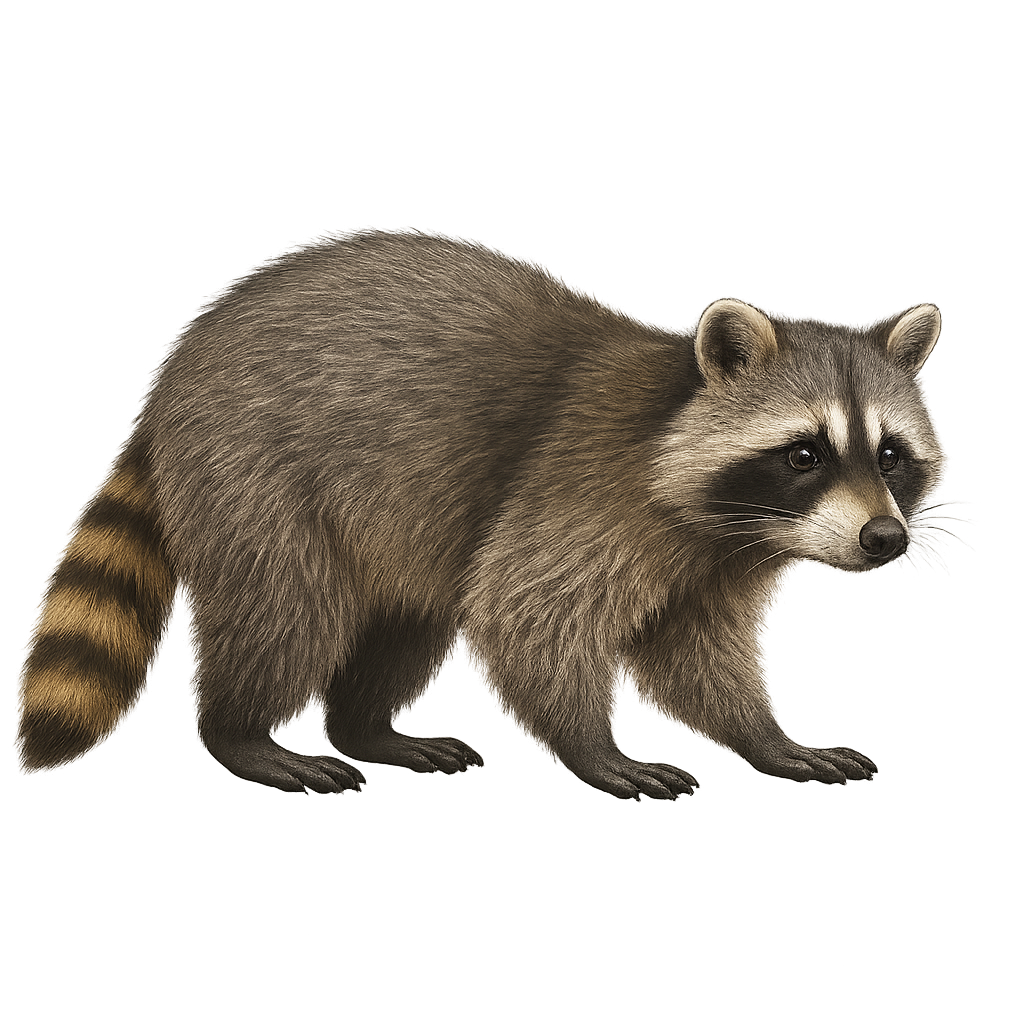Observe and photograph a species in its natural habitat
Learn where and when to observe a species in the wild, how to recognize it in the field, and what habitats it lives in. Get photography tips adapted to its behavior and capture stunning images without disturbing the animal. For full details, open the complete profile in the WildlifePhotographer app.
Northern Raccoon
Scientific name: Procyon lotor

IUCN Status: Least Concern
Family: PROCYONIDAE
Group: Mammals
Shyness: Slightly shy
Safe distance: 10 m
Breeding season / Courtship: 01.01-28.02
Gestation: 63 à 65 jours
Births: 01.03-30.04
Habitat:
Mixed forests, wetlands, and anthropogenic environments
Description:
The Raccoon is a small omnivorous mammal native to North America, but it has now spread widely to other regions of the world, including Europe and Asia. It measures about 40 to 70 cm in length, with a tail of 20 to 40 cm, and weighs between 4 and 10 kg. Its fur is primarily gray, with a distinctive black mask around the eyes, giving it a unique appearance. The Raccoon is an excellent climber and feeds on fruits, nuts, small animals, insects, as well as food scraps when it lives near human settlements. It is known for its curious behavior and its habit of "washing" its food, although this gesture is actually a reaction to the sensation of moisture in its paws. While its population is widespread, this species can sometimes be seen as a pest, especially due to its tendency to rummage through trash and cause damage to homes.
Recommended lens:
>=400 mm
Photography tips:
Approach slowly and discreetly, using a telephoto lens to avoid disturbing the raccoon, a curious animal that can flee quickly if disturbed.
Photograph early in the morning or late in the afternoon, when the light is soft and the raccoon is more active, often foraging for food in wooded areas or along streams.
Capture moments of rummaging: Raccoons are known for their rummaging behavior, often seen manipulating objects or searching for food in the water.
Be patient: The raccoon is nocturnal, so be prepared to photograph during dusk or early evening.
The Raccoon is a species of minor concern, but it is important to respect its natural space and avoid disturbing its feeding habits or environment. Follow local conservation rules to minimize the impact of your presence and preserve its natural habitat.
Ready to take action?
Choose your platform and start your free trial today



